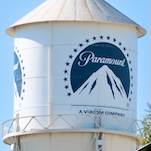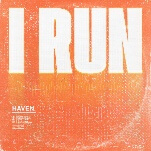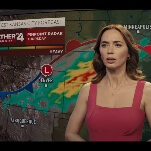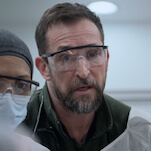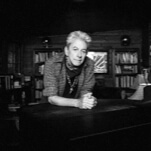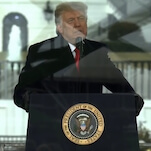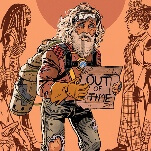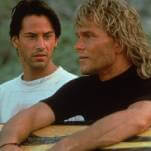Pokémon shock: How a single episode almost derailed a franchise
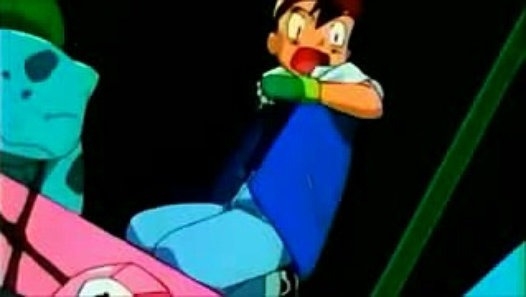
Amid the flurry of media attention surrounding the release of Pokémon Go last summer, a narrative began to emerge underneath the outrageous stories about people finding dead bodies and disrespecting the Holocaust Museum in their thirst to catch ’em all. The game, players were reporting, was good for both their mental and physical health, fighting their depression and social anxiety by motivating them to get out of the house, get some exercise, and meet new people. These little pocket monsters were helping people as well as entertaining them, and we could all feel good about playing with them (minus all the privacy concerns, but that’s another story). But it wasn’t always that way.
The first-generation Pokémon game for Game Boy, Pokémon Red And Blue, didn’t make it to the U.S. until September 1998, more than two years after its Japanese debut. By that point, the game had long since become a phenomenon in its native country, and it was 20 years ago today—April 1, 1997—that the Pokémon anime premiered in Japan. The show was an instant hit, and by December 16 of that year 55 percent of the kindergarten, elementary, and middle school-aged children in Tokyo’s Kawasaki school district were tuning in to Pokémon on Tuesday evenings. (In the city of Toyohashi, located on the Pacific Ocean near Nagoya, the number went as high as 70 percent of elementary school students.)
That night, at 6:30 p.m. local time, more than 37 TV stations aired the 38th episode of Pokémon, “Dennō Senshi Porigon,” translated as either “Electric Soldier Porygon” or “Cyber Soldier Porygon.” The episode follows Ash, Misty, Brock, and Pikachu (or Satoshi, Kasumi, Takeshi, and Pikachu, in the original Japanese) as they venture into the Poké Ball transfer system in search of Porygon, a digital Pokémon that has been kidnapped by Team Rocket in an attempt to steal other trainers’ Pokémon from inside cyberspace. Twenty-one minutes into the episode, Pikachu launches a thunderbolt attack against anti-computer virus “vaccine missiles” and they collide in mid-air, setting off red and blue lights quickly flashing for a strobe-like effect called “paka paka.” Almost immediately, parents began calling for ambulances.
Warning: The following clip has been proven to cause epileptic seizures in photosensitive individuals. Watch at your own risk.
By 7:30, hospitals across the country had admitted between 600 and 700 people, mostly children—American media reported more than 700, but Japan’s Fire-Defense Agency later counted 618—complaining of everything from nausea and headache to irritated eyes, shortness of breath, convulsions, vomiting, and full-blown seizures. One boy quoted in the South China Morning Post said, “I was watching TV but I [couldn’t] remember anything at all when it was all over. I felt so sick,” and another 15-year-old girl reported, “As I was watching blue and red lights flashing on the screen, I felt my body becoming tense. I do not remember what happened afterward.”
Exacerbating the problem were evening news broadcasts about the incident: Some of them, for some reason, thought it was a good idea to re-play the clip that was making children sick in reports about a TV show that was making children sick, causing a second wave of hospital visits among kids who had watched the news. Most of those affected were discharged quickly, but a CNN report from 1997 says that 200 people between the ages of 3 and 58 were still in the hospital the following morning.
By the time kids arrived at school on Wednesday morning, the “Pokémon shock” incident was dominating both schoolyard conversations and the national media. Police were dispatched to question the show’s dumbfounded animators, the Health And Welfare ministry called an emergency meeting, and the show was put on hiatus as people tried to figure out what the hell had gone wrong—and who was to blame. Nintendo was quick to absolve itself of blame, with president Hiroshi Yamauchi telling the press, ‘’This problem arose because of the way TV Tokyo produced the show.” But Takemoto Mori, the program producer, told The Japan Times that, like all episodes of Pokémon, “Dennō Senshi Porigon” had been pre-screened by producers and individual TV stations before broadcast, and another producer added that they had used the “paka paka” technique as a device to create tension “hundreds of times” before without incident.
In the aftermath of “Dennō Senshi Porigon,” shares in Nintendo dropped 5 percent, video stores across the country pulled Pokémon from their shelves, and the episode was withdrawn from circulation, never to be broadcast again in Japan or anywhere else. (Rumors persist on anime forums that the episode was dubbed for American TV, but the tape has yet to turn up.) The panic over the incident made international news, meaning that the first time that many American parents even heard of Pokémon was in articles saying that it would make their children sick. And Western comedies just wouldn’t let the joke die: The Simpsons parodied it in the season 10 episode “Thirty Minutes Over Tokyo” in the form of a TV show called Battling Seizure Robots, and South Park gave Kenny a seizure while playing a Pokémon-type video game in “Chinpokomon,” which also aired in 1999.






